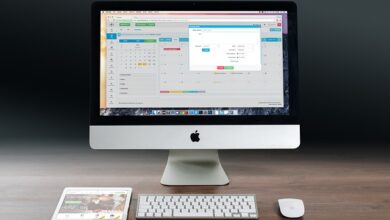How to Learn UX/UI Design & Start a Career in Tech

In today’s digital-first world, UX (User Experience) and UI (User Interface) design are two of the most sought-after skills in the tech industry. From websites and mobile apps to smart devices and software platforms, every digital product requires thoughtful design to ensure usability, accessibility, and user satisfaction. If you’re interested in breaking into tech as a UX/UI designer, this comprehensive guide will walk you through everything you need to know—from learning the fundamentals to landing your first job.
What is UX/UI Design?
UX Design (User Experience Design)
UX design focuses on enhancing the overall experience users have when interacting with a product or service. It involves understanding user needs, conducting research, creating wireframes, and testing prototypes to ensure the product is intuitive, functional, and enjoyable to use. The goal of UX design is to solve problems and create seamless interactions between users and technology.
UI Design (User Interface Design)
UI design, on the other hand, deals with the visual aspects of a product—how it looks and feels. This includes typography, color schemes, buttons, icons, and other elements that make up the interface. UI designers aim to create visually appealing designs that align with the brand identity while ensuring usability.
While UX and UI are distinct disciplines, they often overlap. A successful digital product requires both excellent functionality (UX) and beautiful aesthetics (UI).
Why Choose a Career in UX/UI Design?
The demand for skilled UX/UI designers has skyrocketed in recent years, making it an attractive career path for aspiring tech professionals. Here’s why:
1. High Demand
- Companies across industries—from startups to Fortune 500 giants—are investing heavily in improving their digital products, creating a growing need for UX/UI expertise.
2. Creative Freedom
- As a designer, you’ll have the opportunity to express your creativity while solving real-world problems.
3. Job Security
- With the rise of digital transformation, UX/UI designers enjoy strong job security and competitive salaries.
4. Remote Work Opportunities
- Many UX/UI roles can be performed remotely, giving you flexibility in where and how you work.
5. Impactful Work
- Your designs directly influence how people interact with technology, shaping their daily lives in meaningful ways.
Key Skills for UX/UI Designers
To succeed as a UX/UI designer, you’ll need a combination of technical, creative, and interpersonal skills:
Technical Skills
- Wireframing and Prototyping : Tools like Figma, Sketch, Adobe XD, and InVision.
- User Research : Conducting interviews, surveys, and usability tests to gather insights.
- Information Architecture : Organizing content and features logically.
- Interaction Design : Creating interactive elements that enhance user engagement.
- Responsive Design : Ensuring designs adapt to various screen sizes and devices.
Creative Skills
- Typography and Color Theory : Understanding how fonts and colors affect mood and readability.
- Visual Hierarchy : Prioritizing information to guide users effectively.
- Branding : Aligning designs with a company’s brand identity.
Soft Skills
- Communication : Clearly articulating ideas to stakeholders and team members.
- Collaboration : Working closely with developers, marketers, and product managers.
- Problem-Solving : Identifying pain points and proposing innovative solutions.
- Empathy : Putting yourself in the user’s shoes to understand their needs.
How to Learn UX/UI Design
There are multiple paths to learning UX/UI design, depending on your budget, time commitment, and preferred learning style. Below are some effective strategies:
1. Online Courses and Certifications
- Platforms like Coursera, Udemy, and LinkedIn Learning offer affordable courses taught by industry experts.
- Recommended programs:
- Google UX Design Certificate (Coursera): Beginner-friendly and widely recognized.
- Interaction Design Foundation : Affordable memberships with in-depth courses.
- Springboard’s UX/UI Bootcamp : Intensive program with mentorship and job guarantees.
2. Books and Resources
- Read foundational books like Don’t Make Me Think by Steve Krug and The Design of Everyday Things by Don Norman.
- Follow blogs like Smashing Magazine, Nielsen Norman Group, and UX Planet.
3. Practice Projects
- Redesign existing websites or apps to practice applying UX principles.
- Participate in design challenges on platforms like Dribbble or Behance.
4. Join Communities
- Engage with online forums like Reddit’s r/UXDesign or Designer Hangout.
- Attend local meetups or virtual events hosted by organizations like AIGA or IxDA.
5. Learn Design Tools
- Master tools like Figma, Adobe XD, Sketch, and Miro, which are staples in the industry.
Building a Strong Portfolio
Your portfolio is your ticket to landing a UX/UI role. It showcases your skills, process, and ability to deliver results. Follow these tips to create a standout portfolio:
1. Include Real-World Projects
- Highlight case studies that demonstrate your problem-solving abilities.
- Include details about the challenge, your approach, and the outcome.
2. Showcase Your Process
- Document each step of your workflow: research, wireframes, prototypes, and final designs.
3. Keep It Simple and Professional
- Use clean layouts and consistent branding to reflect your attention to detail.
4. Host Your Portfolio Online
- Use platforms like Behance, Dribbble, or create a personal website using Webflow or Squarespace.
5. Tailor It to the Role
- Customize your portfolio based on the specific job description, emphasizing relevant skills and projects.
Networking and Finding Opportunities
Building connections is crucial for breaking into the UX/UI field. Here’s how to expand your network:
1. Leverage Social Media
- Share your work on LinkedIn, Twitter, and Instagram to attract potential employers.
- Engage with industry leaders by commenting on their posts or joining discussions.
2. Attend Events
- Participate in conferences like UXPA International or Interaction Week.
- Join hackathons or design sprints to collaborate with others.
3. Seek Mentorship
- Find experienced designers who can provide guidance and feedback.
4. Apply to Internships
- Gain hands-on experience through internships or freelance gigs.
Landing Your First UX/UI Job
Once you’ve built your skills and portfolio, it’s time to start applying for jobs. Follow these steps to increase your chances of success:
1. Optimize Your Resume
- Highlight key achievements and quantify impact (e.g., “Improved conversion rates by 20%”).
- Tailor your resume to match the job requirements.
2. Prepare for Interviews
- Practice answering common questions like “Walk me through your design process.”
- Be ready to present your portfolio and explain your decision-making.
3. Consider Entry-Level Roles
- Look for positions like Junior UX Designer, UI Designer, or Product Designer.
4. Freelance to Build Experience
- Platforms like Upwork and Toptal can help you find short-term projects.
Common Challenges and How to Overcome Them
Breaking into UX/UI design isn’t without its obstacles. Here’s how to tackle them:
1. Lack of Formal Education
- Focus on building a strong portfolio and gaining practical experience instead.
2. Imposter Syndrome
- Remember that everyone starts somewhere; celebrate small wins along the way.
3. Staying Updated
- Follow industry trends by subscribing to newsletters like UX Design Weekly.
4. Balancing Creativity and Business Goals
- Learn to advocate for user-centered solutions while considering business objectives.



